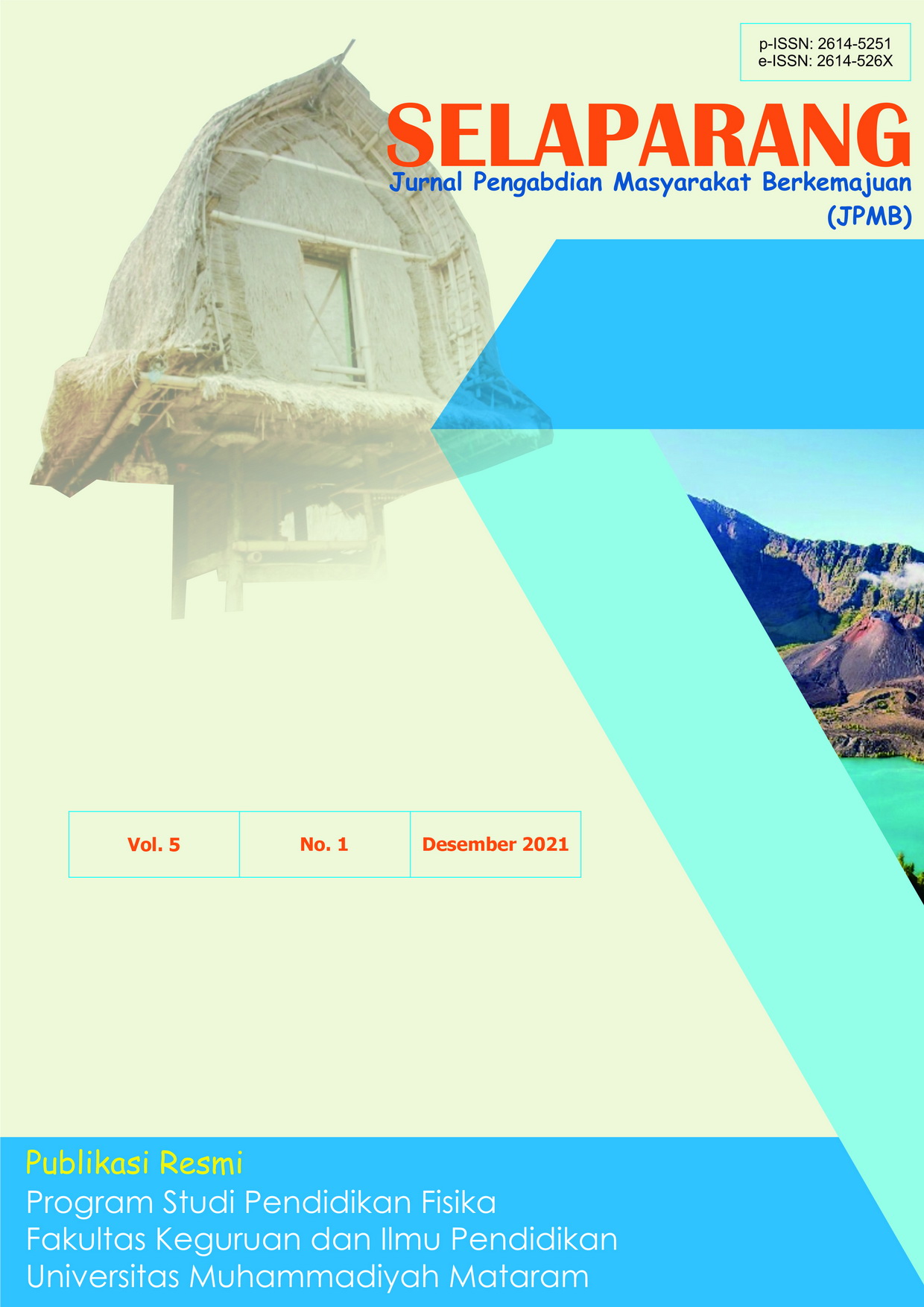PENGENALAN TEKNOLOGI NAVIGASI BIDANG MARITIM MELALUI VIRTUAL OUTING UNTUK ANAK-ANAK JOGJAKARTA MONTESSORI SCHOOL
DOI:
https://doi.org/10.31764/jpmb.v5i1.5455Keywords:
technology, navigation, maritime, virtual outingAbstract
ABSTRAK
Pengabdian masyarakat ini bertujuan untuk mengenalkan dan mensosialisasikan inovasi teknologi navigasi dalam bidang maritim melalui virtual outing untuk anak-anak Jogjakarta Montessori School Elementary Program. Peserta yang dilibatkan dalam kegiatan pengabdian ini yaitu Guru-guru SD dan anak-anak kelas 4,5 dan 6. Rangkaian kegiatan ini meliputi 3 tahapan yaitu: Tahap persiapan, tahap pelaksanaaan dan tahap evaluasi. Tahap persiapan meliputi persiapan alat-alat navigasi yang dimiliki oleh Sekolah Tinggi Maritim Yogyakarta dan pembuatan materi. Tahap pelaksanaan meliputi pembukaan, pemaparan materi dan penjelasan alat-alat navigasi di laboratorium simulator, kemudian dilanjutkan dengan diskusi dan tanya jawab peserta yang hadir. Pada tahap evaluasi, peserta mengisi kuesioner melalui google form, hasil kuesioner yaitu meliputi: aspek presentasi yang disampaikan pemateri memiliki nilai kepuasan sebesar 76.27%, aspek atensi yang disampaikan oleh pemateri terhadap pengenalan alat-alat navigasi mempunyai nilai kepuasan sebesar 83.05%, aspek motivasi tanya jawab mempunyai nilai kepuasan sebesar 88.14%,  rata-rata semua aspek mempunyai nilai kepuasan sebesar 82.48 %
Â
Kata kunci: teknologi; navigasi; maritim; virtual outing.
Â
ABSTRACT
This community service aims to introduce and socialize navigation technology innovations in the maritime field through virtual outings for the children of the Elementary Program in the Yogyakarta Montessori School. The participants involved in this service activity are elementary school teachers and children class 4,5 and 6. This series of activities includes 3 stages, namely: the preparation stage, the implementation stage and the evaluation stage. The preparation stage completes the preparation of navigation tools owned by the Sekolah Tinggi Maritim Yogyakarta and the manufacture of materials. The implementation stage of the opening, the presentation of the material and navigational tools was followed by discussion and question and answer from the participants present. At the evaluation stage, participants filled out a questionnaire through the google form, the results of the questionnaire include: aspects of the presentation delivered by the speaker have a satisfaction value of 76.27%, aspects of attention submitted by speakers to the introduction of navigation tools have a satisfaction value of 83.05%, aspects of question and answer motivation have a satisfaction value of 88.14%, on average all aspects have a satisfaction value of 82.48 %.
Â
Keywords: technology; navigation; maritime; virtual outing
ÂReferences
ARINDA, M. S. (2020). ANALISIS FAKTOR-FAKTOR YANG MEMPENGARUHI KESELAMATAN PELAYARAN KAPAL PENUMPANG DIPELABUHAN TANJUNG EMAS SEMARANG (Studi di KM. Kelimutu PT. Pelni Cabang Semarang). SKRIPSI.
Astriawati, N. (2020). Development of interactive media based on videoscribe with realistic mathematics education approach to navigation. Math Didactic: Jurnal Pendidikan Matematika, 6(3), 321–333.
Gouic, M. Le. (1998). ECDIS: Electronic Chart Display and Information System. Navigation-Paris, 46(181), 39–51.
Kazimierski, W., & Stateczny, A. (2013). Fusion of Data from AIS and Tracking Radar for the Needs of ECDIS. 2013 Signal Processing Symposium (SPS), 1–6.
Lorenz, R. D., Elachi, C., West, R. D., Johnson, W. T. K., Janssen, M. A., Moghaddam, M., Hamilton, G. A., Liepack, O., Bunker, A., & Roth, L. E. (2001). Cassini radio detection and ranging (RADAR): Earth and venus observations. Journal of Geophysical Research: Space Physics, 106(A12), 30271–30279.
Masmilah, M., Setiawan, H., Hermawansyah, W., & Haryadi, R. (2019). Rancang Bangun Sistem Monitoring Kapal Menggunakan Data Automatic Identification System (AIS) Dengan Geographic Information System (GIS). Prosiding TAU SNAR-TEK Seminar Nasional Rekayasa Dan Teknologi, 1(1), 24–29.
Nuryanto, H. (2012). Sejarah perkembangan teknologi informasi dan komunikasi. PT Balai Pustaka (Persero).
Purnama, B. E. (2011). Pemanfaatan Global Positioning System Untuk Pelacakan Objek Bergerak. Speed-Sentra Penelitian Engineering Dan Edukasi, 1(4).
Downloads
Published
Issue
Section
License
The copyright of the received article shall be assigned to the journal as the publisher of the journal. The intended copyright includes the right to publish the article in various forms (including reprints). The journal maintains the publishing rights to the published articles.

Selaparang : Jurnal Pengabdian Masyarakat Berkemajuan is licensed under a Creative Commons Attribution-ShareAlike 4.0 International License.

